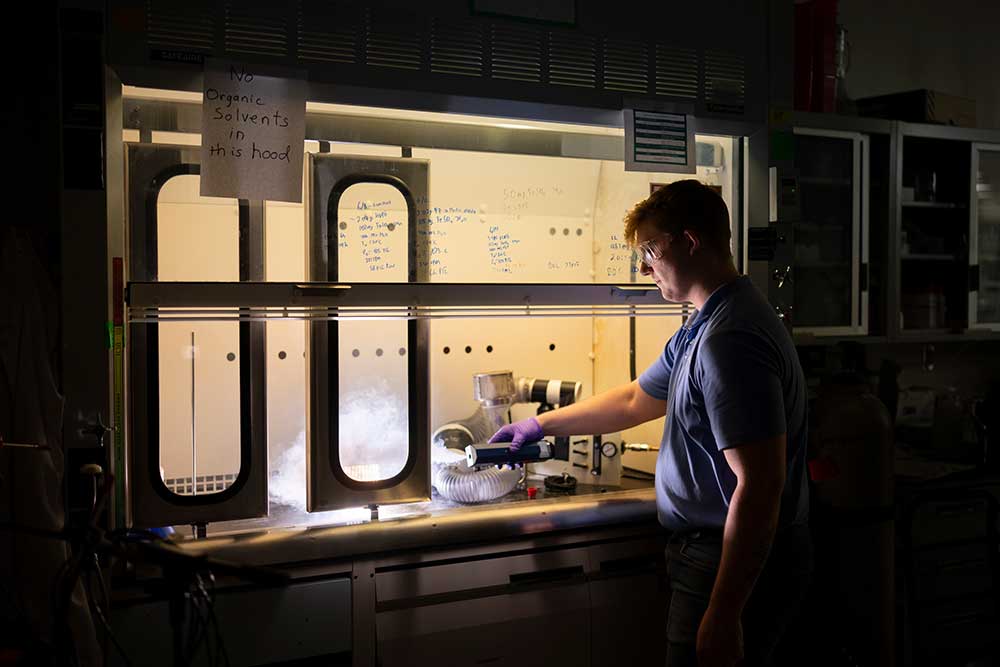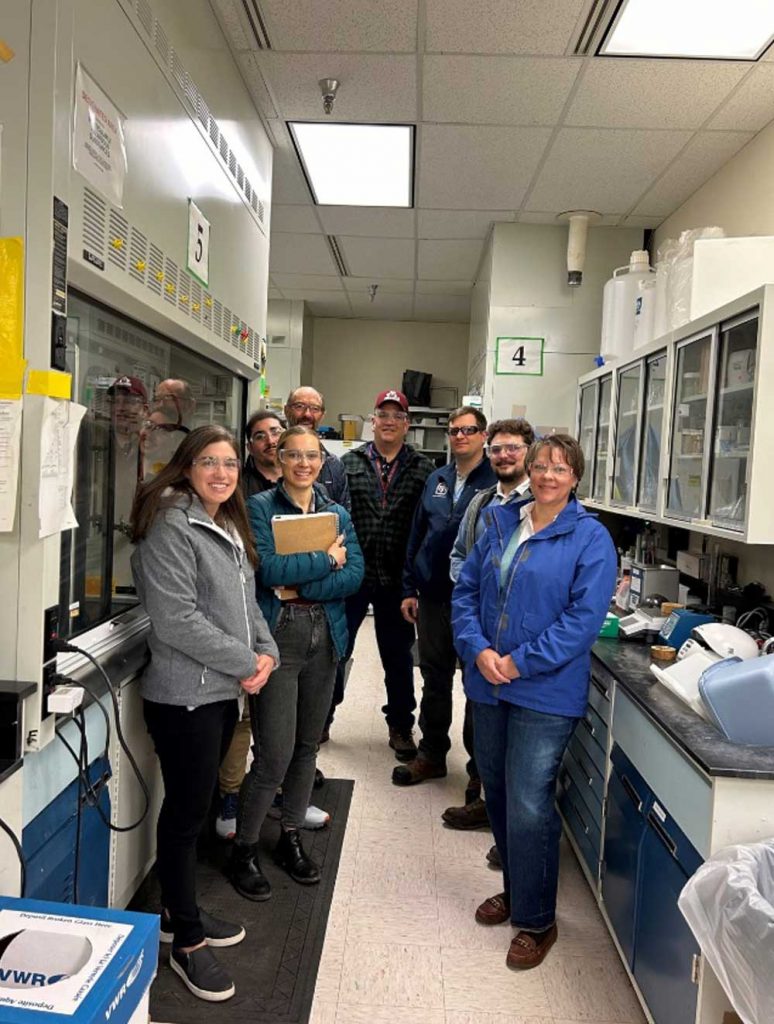
Sandia has completed a pilot of the Smart Labs program in Building 897 at the Albuquerque site, aiming to make the laboratories safer, more energy efficient and ultimately better equipped to support our scientists — and our mission.
“Smart Labs helps us design spaces based on the specific hazards facing the scientists, while also reducing costs and energy usage,” said João Oliveira, Sandia’s Smart Labs coordinator.
João led the multidisciplinary pilot team of engineers, industrial hygienists and construction crewmembers. Together, they worked to improve ventilation in 897 by capping unused exhaust hoods, retrofitting existing fume hoods and replacing inefficient laminar hoods.
Piloting a team approach
One of nine “clone” buildings designed using similar principles, the team chose Building 897 for the pilot because of its close resemblance to other spaces and its large size — it houses more than 60 lab spaces — provided many opportunities for improvement.
The Smart Labs process starts by assessing laboratory practices and procedures for possible hazards. Sandia then engaged a consultant to translate those assessments into a list of more than 40 specific projects.
The team presented those ideas in a town hall with Building 897 occupants and began consulting with individual laboratories to gauge their needs, interest and availability.

“Initially, people had a lot of questions,” said Roberto Armijo, Smart Labs lead mechanical engineer. “But when you start digging in, the program makes a lot of sense.”
Once a laboratory agreed to participate, the next step was to identify hazards that could affect the construction team. Environment, Safety and Health Coordinator Fernanda Garavito worked with the Material, Physical and Chemical Sciences Center labs in Building 897 to conduct job site hazard evaluations.
“If they need to modify or remove a fume hood, for example, we must remove the chemicals and decontaminate the equipment to ensure the crew won’t be exposed when touching surfaces,” Fernanda said.
With safety plans in place, Sandia’s in-house construction team could finally start making upgrades — but not before coordinating with each lab to prevent scheduling conflicts. “We did not want to interrupt any mission work,” said Berna Otero, construction manager for the pilot.
“We interfaced with the lab owners and construction team to make sure they were on the same page, and we met weekly to go through the schedule and discuss our progress,” Berna said.
João identified communication as the project’s biggest challenge. “One of the lessons learned was that we need to engage people up front in understanding what we can do through the program and its benefits.”
Reaping the benefits
First and foremost among those benefits are the safety improvements that came from retrofitting existing fume hoods. The team also removed unused fume hoods and laminar flow hoods.
“Laminar flow hoods are designed to protect your materials,” Fernanda said. “Fume hoods prevent air from going out towards the worker, decreasing exposure.” A future goal for some of the labs in 897 is to replace the removed laminar flow hoods with the relocated fume hoods.
For Laboratory Support Technologist Dave Rademacher, removing an unused laminar flow hood reclaimed useful workspace for his lab’s chemical analysis and materials characterization research. “The construction team also started preparing the lab for a full hood that will allow us to do even more chemistry,” Dave said.
Dave added that the individual lab projects will help with the building’s larger ventilation system, too. “When the system is overused, all the hoods kick off.” Now, the building has a much lower ventilation load, gaining back capacity that can be allocated to future projects.
João said that Smart Labs has already saved Sandia $64,000 in energy costs and reduced our carbon footprint by an amount equivalent to the annual electricity usage of 14 homes. The program also saved individual labs money by paying for the removal of unused fume hoods and then giving them to other labs in need of new equipment.
Further savings came from collaborating with Roberto on the engineering designs and with Sandia’s newly formed in-house construction team. “This project gave the construction team the opportunity to show what they are capable of, and they did a really good job,” Berna said.
Next steps
In addition to completing more ventilation assessments — including for buildings at the California site — the team has incorporated Smart Labs guidelines into the standards manual that regulates design, construction, operation and maintenance of all Sandia facilities.
Those guidelines are being used to design Sandia’s first fully Smart Labs-compliant laboratory, but funding remains a challenge. The pilot program received money from Sandia’s Reinvestment in Utility Savings program, which reinvests savings from renegotiated utility rates into energy projects.
João anticipates more opportunities for the Smart Labs program in the future as Sandia strives to achieve net-zero greenhouse gas emissions by 2050. “We are trying to change the culture, right? Smart Labs has succeeded in making lab users more aware of Sandia’s sustainability efforts and what they can do to help.”